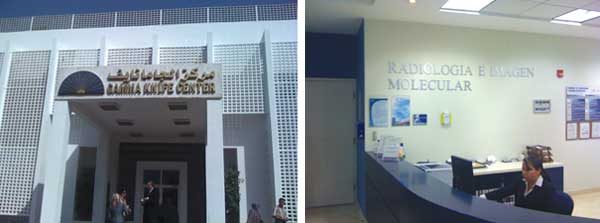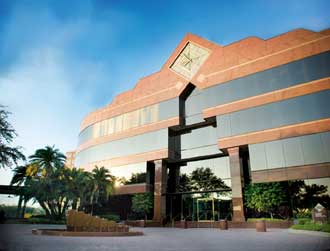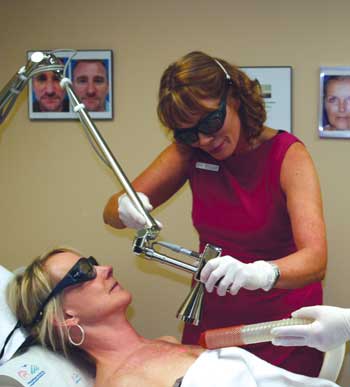The medical laser market could benefit from an upswing in medical tourism and aesthetic applications.
Medical tourism – where patients seek health care outside their own country or region, whether to reduce costs or to find better care than they could at home – is booming. As Americans continue to struggle with a faltering economy, medical tourism insiders remind us, ongoing debates over health care reform in the US could easily bring the country to a halt.
And the medical tourism market is only expected to grow. The market value was $10.5 billion in 2012 and is estimated to be worth $32.5 billion in 2019, with a compound annual growth rate of 17.9 percent from 2013 to 2019, according to a report published in October.
Just as in health care generally, laser-based procedures are playing a major role in this. For all kinds of treatments – skin-rejuvenation procedures in the Macau region of China, lasik eye surgery in Delhi, India, or prostate treatment in the Czech Republic – lasers are driving much of the demand for and growth in medical tourism.
It’s very common for medical tourism providers to include laser-based procedures on their lists of competencies, said David Vequist, founder and director of the Center for Medical Tourism Research at the University of the Incarnate Word in San Antonio, Texas.
 Medical tourism is a significant market, with patients traveling both domestically and internationally seeking more affordable and even better health care than they could find at home. Shown here are hospitals in Egypt and Mexico, both of which receive international patients. Images courtesy of David Vequist.
Medical tourism is a significant market, with patients traveling both domestically and internationally seeking more affordable and even better health care than they could find at home. Shown here are hospitals in Egypt and Mexico, both of which receive international patients. Images courtesy of David Vequist.
These providers sometimes even center their promotional efforts around a particular state-of-the-art piece of equipment, he said, often the same equipment used by providers in the US and Western Europe. For example, the Ho Chi Minh City Eye Hospital in Vietnam highlights its VisuMax femtosecond laser system from Carl Zeiss Meditec. They are addressing head-on an outmoded view of medical tourism, which views the practice as offering more affordable care but with substandard equipment and minimal expertise.
It’s not just abroad, though. More and more, patients within the US are traveling across state and regional borders to receive care, contributing to economic growth in the host areas. One example: the Laser Spine Institute, based in Tampa, Fla. A recent case study by University of South Florida’s College of Business found that the institute – which treats conditions like bone spurs, bulging disks and pinched nerves – had an impact of nearly $140 million on the local economy in 2012, including operational expenditures, employee spending and spending by out-of-area patients.
Nonlocals account for more than 90 percent of patients treated by the Laser Spine Institute, driving nearly $14.9 million to the local Tampa Bay economy, the report said.

The Tampa, Fla.-based Laser Spine Institute attracts patients from throughout the region and even the country, helping to drive money to the local economy. Courtesy of the Laser Spine Institute.
New frontiers in cosmetic surgery
Lasers have long played a role in cosmetic surgery. In recent years, though, they have helped to serve an emerging demographic there: men. Male patients accounted for about a million minimally invasive procedures in 2012, a 56 percent increase over 2000, according to the American Society of Plastic Surgeons.
Among the most common of the procedures they are having are laser skin resurfacing and laser hair removal.
Men are turning to cosmetic work for a variety of reasons. For example, a recent study suggests that the increasingly competitive job market makes many feel they need to look more youthful, less tired and haggard, like the upstarts gunning for their jobs. But career concerns aren’t the only driver of the trend.
“It’s really more of a general confidence issue,” said Dr. Cynthia Elliott, owner of the Clearwater, Fla.-based Skinspirations, which offers laser-based and other services for rejuvenation, enhancement and anti-aging treatments. Many male patients are looking to get rid of acne scars from adolescence, which often carry bad memories, or to remove those tattoos that seemed such a good idea in their days of unassailable youth.

Dr. Cynthia Elliott, owner of a Clearwater, Fla.-based cosmetic medicine center, performs a range of laser-based cosmetic procedures. In recent years,she has seen an increasing number in men seeking to have the procedures done, in addition to the traditionally more common female patients. Courtesy of Dr. Cynthia Elliott/Skinspirations.
Why now, though? What accounts for the uptick in male patients having cosmetic work done? Men have only recently become aware of the fact that they could address some of these concerns, Elliott said. Women’s magazines have always featured articles about what you can achieve with cosmetic procedures, but you see far fewer such articles targeting men. “It took them a little bit longer to realize it was an option.”
She noted another difference between men and women in seeking treatments: In her experience, male patients are more likely to choose to have laser-based procedures as “a one-time fix.”
Women will come in every few months for Botox treatments, for example. But men would rather skip the repeat visits, especially if they also have to worry about applying creams, etc., between the visits. If they can instead just completely rebuild the structure of the skin with a laser treatment, Elliott said, they will choose to go that route.
Will Obamacare boost medical tourism?
A couple of years ago, David Vequist was asked by the United Nations to develop projections as to how the Affordable Care Act – better known, perhaps, as Obamacare – might impact health care providers and consumers in the US, and how this might ultimately affect medical tourism into Latin America.
With increased access to health care but without an increased supply of physicians and other health care providers, he said, we are likely to see longer wait times for appointments and procedures, including MRIs and other diagnostic scans. And patients in the US won’t be thrilled with these wait times. “I suspect most Americans won’t want to wait six weeks for an MRI,” Vequist said. “They will travel elsewhere to get a procedure done.”
Large employers like Wal-Mart and Pepsi are already rolling out medical travel programs that could facilitate this, making arrangements with health care vendors to provide care to their employees. Thus far, these arrangements have focused on high-cost specialty procedures such as cardiac surgery, cancer care and transplants. But they are also seeking access to alternative treatments, procedures that can be done better or less expensively – or, ideally, both.
As for individuals hoping to reduce wait times, “I don’t know ultimately what will happen,” said Vequist. “I suspect that most of the travel will be domestic. For example, if you don’t have access to MRI in your city or state, you might travel across state lines to have a scan done.”
When hair removal goes wrong
Laser hair removal and similar procedures are more popular than ever, but that doesn’t mean patients are always thrilled with the outcome.
Lawsuits involving procedures performed by nonphysicians are on the rise, especially when those procedures are done outside a traditional medical setting, according to a recent JAMA Dermatology study by Dr. H. Ray Jalian and colleagues. Jalian is a clinical instructor of medicine in the dermatology division at the David Geffen School of Medicine at UCLA.
In 2008, 36.3 percent of the lawsuits stemming from skin-related laser procedures involved nonphysicians – for example, nurse practitioners, electrologists and aestheticians. In 2012, the number had risen to 85.7 percent.
The most common procedure in these cases is laser hair removal. Between 2008 and 2012, 85.7 percent of the laser hair removal lawsuits involved procedures performed by nonphysicians.
This is at least in part due to the popularity of laser hair removal and other, similar procedures, the researchers said. As demand for the procedures increases, physicians have turned to medical assistants, for example, to perform them, while in many states spas and other nonmedical facilities are legally allowed to offer them without a physician supervising them.